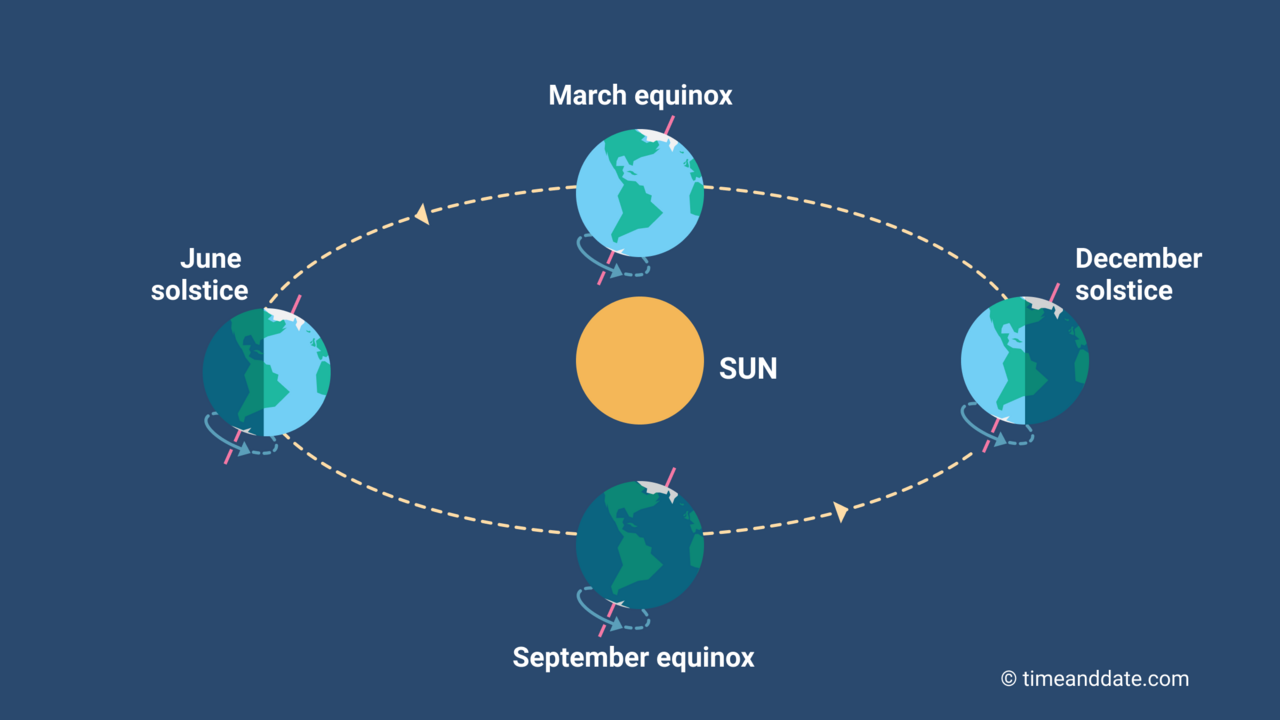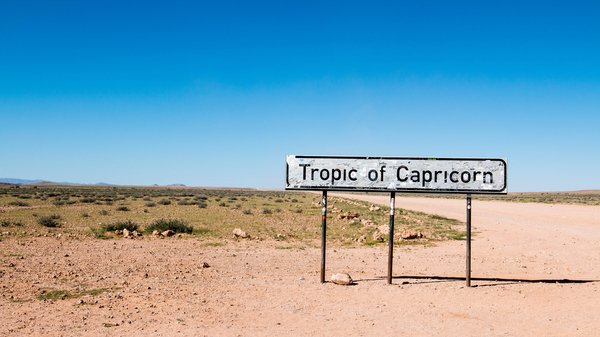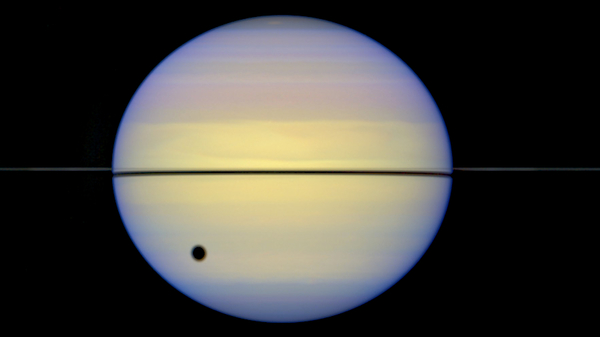What Is the Equinox? And What Is the Solstice?
Equinoxes and solstices are a result of two things: Earth’s tilt and its orbit around the Sun.

Earth, like nearly all the planets, orbits the Sun in a tilted fashion.
©NASA Johnson Space Center
Earth spins once a day on its axis of rotation, an imaginary line running through the North and South Poles. The spinning Earth orbits the Sun once a year, tracing out an imaginary disk called the orbital plane or ecliptic plane.
Compared to its orbital plane, Earth’s axis of rotation is tilted by about 23.4 degrees. This is referred to as Earth’s axial tilt or obliquity.
Earth’s axial tilt remains the same throughout the year. The North Pole always points toward the star Polaris, while the South Pole points toward the much dimmer star Polaris Australis. However, as Earth travels along its orbit, its tilt changes with respect to the Sun.
For six months of the year, the North Pole is tilted toward the Sun, and the Sun lies somewhere above the Northern Hemisphere. For the other six months, the South Pole is tilted toward the Sun, and the Sun lies somewhere overhead the Southern Hemisphere.


Earth takes 12 months to complete one lap around the Sun. Between March and September, the Northern Hemisphere receives more sunlight than the Southern Hemisphere. Between September and March, the Southern Hemisphere receives more sunlight.
©timeanddate.com
The Equinoxes
There are only two moments each year when neither pole points toward the Sun, and the Sun lies directly above Earth’s equator. These moments are the equinoxes.
The March equinox happens sometime between March 19 and 21. The September equinox occurs sometime between September 21 and 24.
In the Northern Hemisphere, the March equinox is also known as the spring or vernal equinox; the September equinox can be called the fall or autumnal equinox. In the Southern Hemisphere, the names are the other way around.
On the date of the equinox, at any location, the lengths of day and night are roughly equal.
Equilux: when day and night are (actually) equal
The Solstices
The farthest points from the equator where the Sun can appear directly overhead are referred to as the tropics.
The tropics are lines of latitude that circle the Earth above and below the equator, at about 23.4 degrees north and south. This angle is set by Earth’s axial tilt.
There are two moments each year when one of Earth’s poles is tilted the most toward the Sun, and the Sun lies directly above one of the tropics. These moments are the solstices.
The June solstice takes place sometime between June 20 and 22, when the Sun is directly above the Tropic of Cancer in the Northern Hemisphere. As a rough guide, the Tropic of Cancer passes through Mexico, northern Africa, the Middle East, India, and China.
The December solstice happens sometime between December 20 and 23, when the Sun is directly over the Tropic of Capricorn in the Southern Hemisphere. In brief, the Tropic of Capricorn runs through South America, southern Africa, and Australia.

A sign marks the approximate point where a road in Namibia, southern Africa, crosses the Tropic of Capricorn.
©iStockphoto.com/evenfh
In the Northern Hemisphere, the June solstice and December solstice can be referred to as the summer solstice and winter solstice. In the Southern Hemisphere, June is winter and December is summer.
On the date of the summer solstice, all locations in that hemisphere experience their longest days and shortest nights. The winter solstice produces the shortest days and longest nights.
Earliest sunrise not on longest day
Equinoxes and Solstices on Other Planets
Every planet in the solar system, apart from Mercury, is tilted on its axis of rotation. This means each planet has its own equinoxes and solstices.
Venus and Jupiter have small axial tilts of 2.6* and 3.1 degrees, respectively. Venus orbits the Sun more quickly than Earth—in Earth time, an equinox or solstice happens on Venus every couple of months or so. Jupiter orbits more slowly; an equinox or solstice occurs there about every three Earth years.
Mars, Saturn, and Neptune have tilts similar to Earth’s: the values are 25.2, 26.8, and 28.3 degrees, respectively. At the equinoxes on Saturn, the planet’s famous rings appear edge-on as seen from Earth.

Saturn’s rings appear wafer-thin in this photo taken around the time of its 1995 equinox. The dark spot is the shadow of Saturn’s moon Titan.
©Erich Karkoschka (University of Arizona Lunar & Planetary Lab) and NASA
Uranus has an axial tilt of 97.8 degrees. This is close to a right angle, meaning the planet appears to lie on its side. Around the solstices on Uranus, the Sun is almost directly overhead one of the planet’s poles.
* Alternatively, because Venus spins in the opposite direction to most planets, its tilt can be given as 177.4 degrees. In other words, Venus can be thought of like it is spinning upside down.